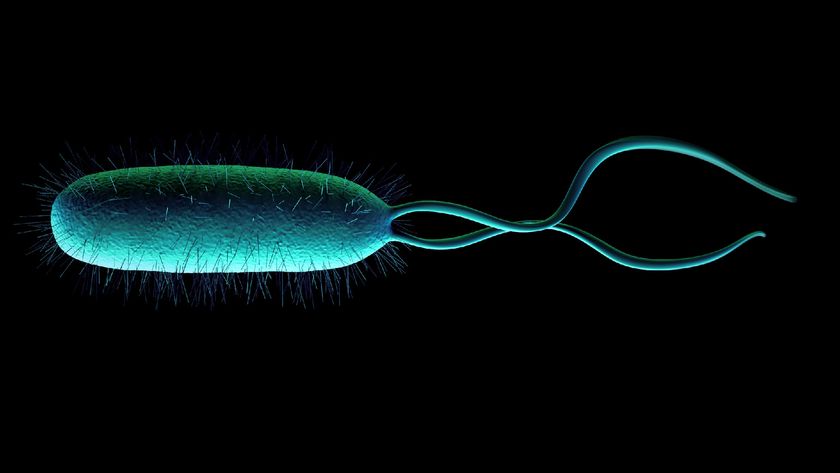Image Gallery: Odd Alien-Looking Skeleton Poses Medical Mystery
Teensy Skeleton
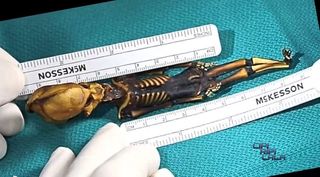
A 6-inch-long (15 centimeters) skeleton was found in the Atacama Desert in Chile. The skeleton showed several anomalies, including its alienlike skull, teensy body and the fact that it had just 10 ribs rather than the 12 that healthy humans normally have.
[Read full story on the "alien" skeleton]
High-Head Syndrome
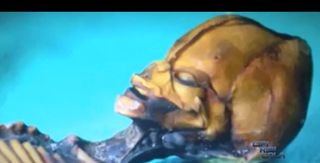
The skull showed signs of turricephaly, or high-head syndrome, a birth defect in which the top of the skull to be sort of cone-shaped due to the premature fusing of some of the skull's sutures, according to Johns Hopkins Pediatric Neurosurgery.
Skeletal Exam
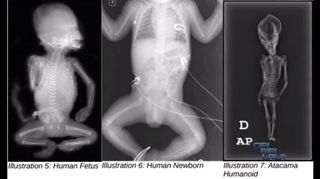
Garry Nolan, professor of microbiology and immunology at Stanford School of Medicine, and his colleagues analyzed the mummified specimen in the fall of 2012 with high-resolution photography, X-rays and computed tomography scans, as well as DNA sequencing.
Human?
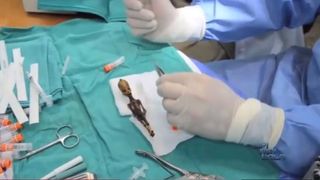
The researchers wanted to find out whether some rare disorder could explain the anomalous skeleton — for instance it had just 10 ribs as opposed to 12 in a healthy human — the age the organism died, as its size suggested a pre-term fetus, stillborn or a deformed child, and whether it was human or perhaps a South American non-human primate.
[Read full story on the "alien" skeleton]
DNA confirms human match
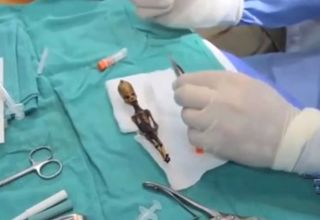
5. The DNA analysis suggested the specimen is human and not a South American non-human primate.
Sign up for the Live Science daily newsletter now
Get the world’s most fascinating discoveries delivered straight to your inbox.
Mother ID'ed
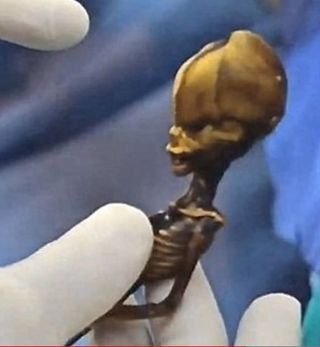
6. Analysis of mitochondrial DNA, stored in the cells' energy-making structures and passed down from mothers to offspring, suggested the individual had been born to a an indigenous woman from the Chilean area of South America.
Skull anomalies
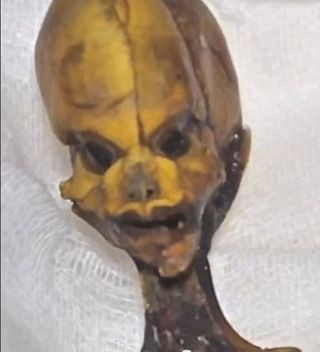
7. The specimen's skull showed signs of underdevelopment in the mid-face and jaw, the researchers found.
Medical mystery
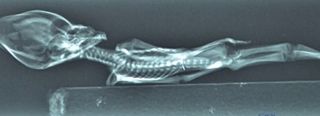
8. The oddities found in the specimen's bones suggest some type of dwarfism, though "there is no known form of dwarfism that accounts for all of the anomalies seen in this specimen," wrote Dr. Ralph Lachman, professor emeritus, UCLA School of Medicine and clinical professor at Stanford University, in a report to Nolan.
More Alien-Looking skulls
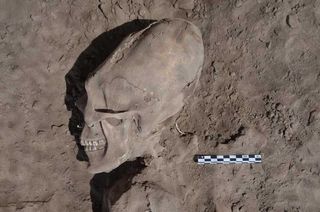
This wouldn't be the first time alien-looking remains have been brought to the attention of science. The alien-like skulls of children were discovered in a 1,000-year-old cemetery in Mexico.
Mexican cemetery - skull wrapping
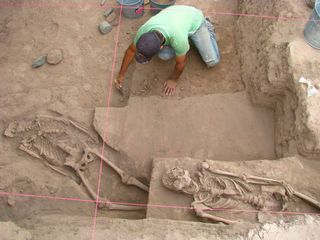
Researchers who examined the children's skulls said they had been deliberately warped and illustrated a practice of skull deformation that was common at the time in Central America.
Nazca Skull
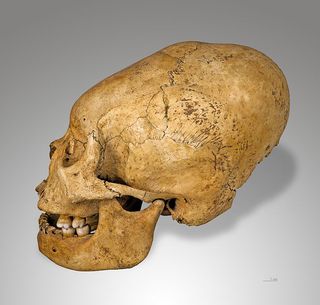
A deformed skull dating to between 200 B.C. and 100 B.C. and belonging to an individual of the Nazca culture, which flourished along the Peruvian coast.
Jeanna Bryner is managing editor of Scientific American. Previously she was editor in chief of Live Science and, prior to that, an editor at Scholastic's Science World magazine. Bryner has an English degree from Salisbury University, a master's degree in biogeochemistry and environmental sciences from the University of Maryland and a graduate science journalism degree from New York University. She has worked as a biologist in Florida, where she monitored wetlands and did field surveys for endangered species, including the gorgeous Florida Scrub Jay. She also received an ocean sciences journalism fellowship from the Woods Hole Oceanographic Institution. She is a firm believer that science is for everyone and that just about everything can be viewed through the lens of science.
